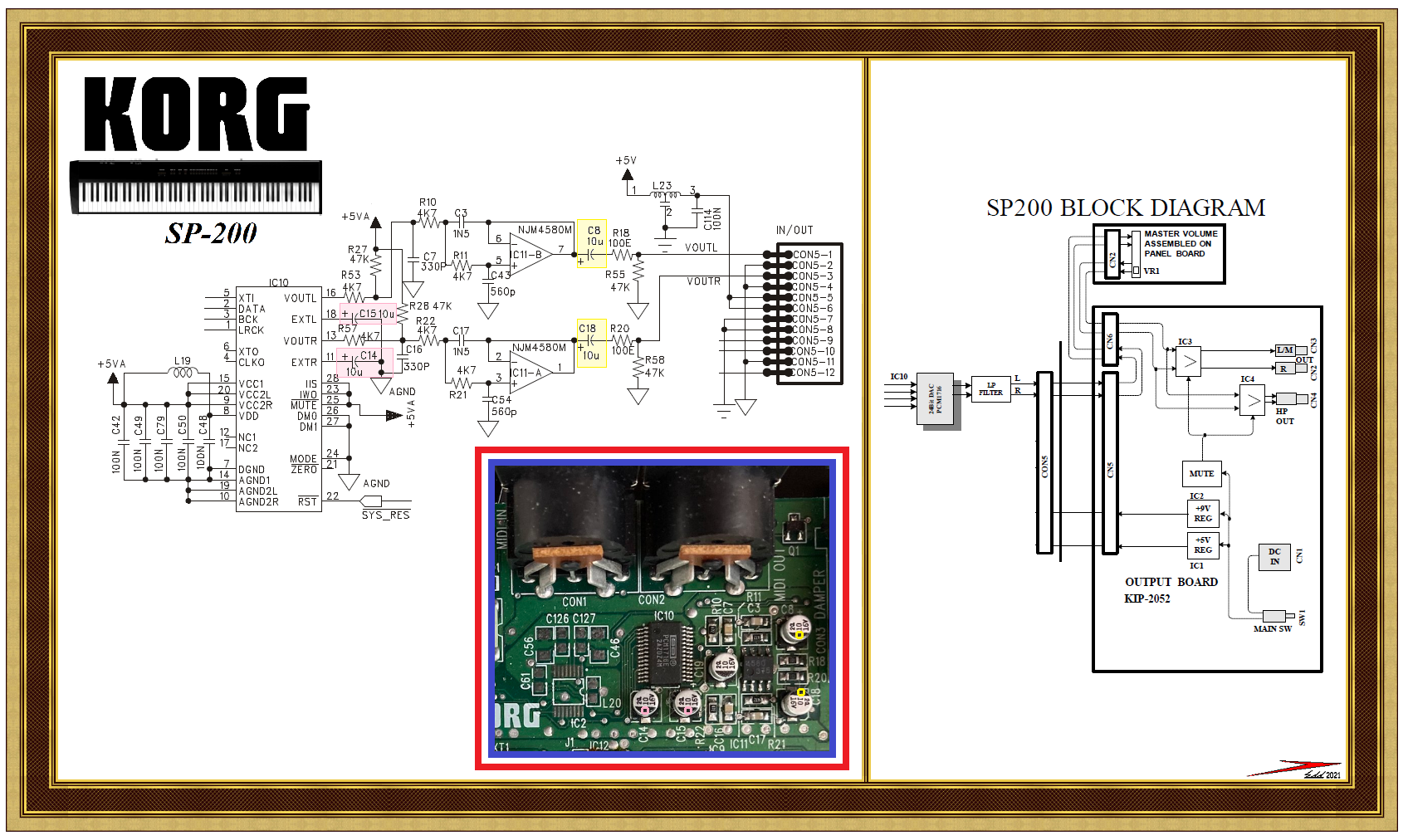The Korg SP-200 plays very low volume.
My symptom is interesting because, the same issue happens both headphone and MIDI to Mac.
(In Mac, make mac volume max, and the midi interface amplification max, it's somewhere in 'mid-range volume).
First I checked below two posts, and replaced 4556AD and 33078P in orange board, and POM1716E in green mainboard, volume switch in control board (impedance is OK).
https://www.electronicspoint.com/forums/threads/korg-sp-200-piano-low-volume.293013/
https://www.electro-tech-online.com...r-repairing-soft-volume-in-korg-piano.157969/
I guess the issue is in mainboard (Since all capacitors are intact in orange board, and replaced all AD converter in the same board), and trying to replicate electro-tech-online post, but cannot point out which SMD cap should be replaced.
I believe many SP-200, 250, 300 users experienced same issue with different cause.
Any help would be very appreciated. Thanks.


My symptom is interesting because, the same issue happens both headphone and MIDI to Mac.
(In Mac, make mac volume max, and the midi interface amplification max, it's somewhere in 'mid-range volume).
First I checked below two posts, and replaced 4556AD and 33078P in orange board, and POM1716E in green mainboard, volume switch in control board (impedance is OK).
https://www.electronicspoint.com/forums/threads/korg-sp-200-piano-low-volume.293013/
https://www.electro-tech-online.com...r-repairing-soft-volume-in-korg-piano.157969/
I guess the issue is in mainboard (Since all capacitors are intact in orange board, and replaced all AD converter in the same board), and trying to replicate electro-tech-online post, but cannot point out which SMD cap should be replaced.
I believe many SP-200, 250, 300 users experienced same issue with different cause.
Any help would be very appreciated. Thanks.



